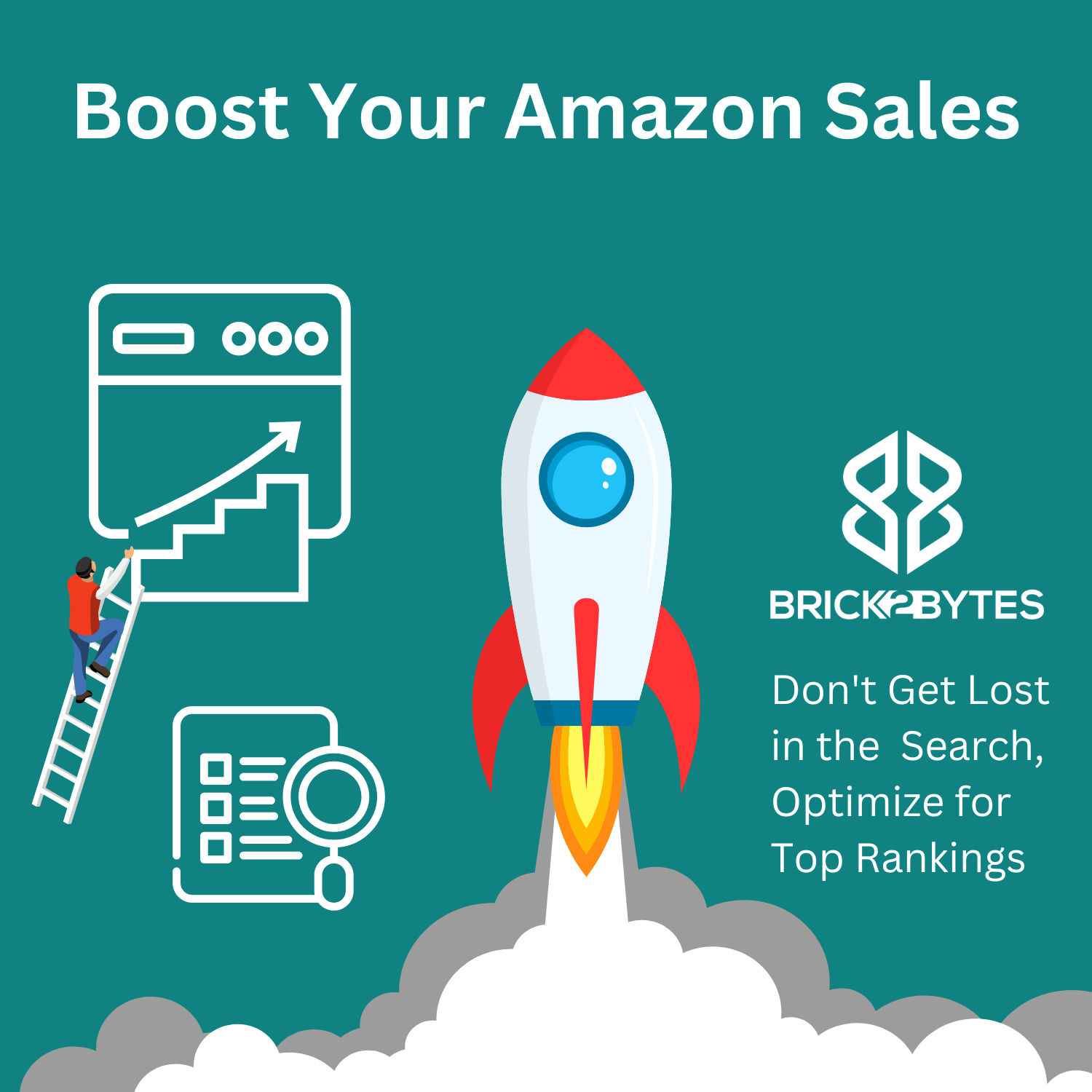1. The Importance of Climbing the Amazon Search Ladder
In the vast expanse of the Amazon marketplace, where millions of products compete for attention, achieving a high product ranking is akin to securing prime real estate on a bustling shopping street. But unlike physical stores, visibility on Amazon isn’t about location; it’s about strategically positioning your product to appear at the top of search results.
Amazon’s A10 algorithm is the gatekeeper to these coveted top spots. It’s a complex system that considers numerous factors, including sales velocity, keyword relevance, click-through rate, and conversion rate, to determine which products deserve the spotlight. A higher ranking translates to increased visibility, more organic traffic to your listings, and ultimately, a significant boost in sales.
Imagine your product as a climber ascending a mountain. The higher you climb, the more expansive your view becomes, and the more people take notice of your ascent. Similarly, as your product climbs the Amazon search rankings, it gains exposure to a wider audience, attracting more potential buyers.
However, achieving and maintaining a high ranking isn’t a one-time effort. It’s an ongoing process that requires continuous optimization and adaptation to the ever-changing algorithm and competitive landscape. Think of it as a marathon, not a sprint. With persistence, strategic planning, and the right tools, you can steadily climb the ranks and reap the rewards of increased sales and brand visibility.
In this blog post, we’ll unveil five proven strategies that can empower you to boost your Amazon product rankings and propel your business to new heights. By understanding these strategies and implementing them effectively, you can gain a competitive edge and unlock the full potential of the Amazon marketplace.
Stay tuned as we detail each strategy and provide actionable tips and insights to help you climb the Amazon search ladder and achieve lasting success.
2. Keyword Optimization: The Foundation of Ranking Success
In the digital landscape of Amazon, keywords are your compass, guiding your product listings to the right customers. Effective keyword optimization improves your product rankings and ensures your offerings appear prominently in relevant searches.
The Power of Keyword Research
Imagine trying to find a specific product in a massive department store without any signs or directions. It would be a daunting task, right? Similarly, without the right keywords, your product might get lost in the sea of listings on Amazon.
Keyword research is the process of identifying the terms and phrases your target customers use when searching for products like yours. By understanding their search behavior, you can strategically incorporate these keywords into your product listings, making it easier for Amazon’s algorithm to match your product with relevant searches.
Several powerful tools can aid you in your keyword research journey:
- MerchantWords: This tool provides comprehensive keyword data, including search volume, competition level, and relevancy scores.
- Sonar: A free tool by Sellics that offers a vast database of Amazon keywords and search trends.
- Keyword Tool: This tool generates hundreds of long-tail keyword suggestions based on your seed keyword.
By utilizing these tools, you can uncover high-traffic keywords with lower competition, giving you a better chance of ranking higher in search results.
Optimizing Your Product Listings
Once you’ve identified your target keywords, it’s time to weave them strategically into your product listings. Here’s how:
- Product Titles: Your product title is the most crucial element for keyword optimization. Include your primary keyword(s) at the beginning of the title, followed by relevant modifiers and details.
- Product Descriptions: Incorporate your target keywords naturally throughout your product description, ensuring it reads well and provides valuable information to potential buyers.
- Backend Keywords (Search Terms): Amazon allows you to add hidden keywords (search terms) to your listings. Use this space to include additional relevant keywords that you couldn’t fit into your title or description.
Remember, keyword stuffing (overusing keywords) can harm your rankings. Focus on using keywords naturally and strategically to enhance the relevance and visibility of your listings
3. Optimize Your Product Listings: Beyond Keywords
While keywords are the foundation, a truly optimized product listing goes beyond just keyword placement. It’s about creating a compelling and informative showcase that not only attracts potential buyers but also convinces them to click that “Add to Cart” button.
High-Quality Images: Your Product’s Visual Story
A picture is worth a thousand words, and on Amazon, it can be worth even more in sales. High-quality images are essential for showcasing your product in its best light and making it stand out from the competition.
- Professionalism: Invest in professional product photography to ensure your images are crisp, clear, and well-lit.
- Multiple Angles: Provide images from various angles to give customers a comprehensive view of your product.
- Lifestyle Images: Include images that show your product in use to help customers visualize how it fits into their lives.
- Infographics: If applicable, use infographics to highlight key features or benefits in a visually appealing way.
Remember, your images are often the first thing potential buyers see, so make sure they leave a lasting positive impression.
Informative Bullet Points: Quick and Easy Information
Bullet points are a great way to present key information about your product in a concise and easy-to-read format. Use them to highlight the most important features, benefits, and specifications of your product.
- Focus on Benefits: Instead of just listing features, explain how those features benefit the customer.
- Use Keywords: Incorporate relevant keywords naturally into your bullet points to improve search visibility.
- Keep it Concise: Aim for short, impactful bullet points that are easy to scan.
Bullet points are a valuable tool for capturing attention and conveying essential information quickly, so make the most of them.
A+ Content: Elevate Your Brand Story
If you’re a brand-registered seller, take advantage of Amazon’s A+ Content (formerly Enhanced Brand Content). This feature allows you to create visually rich product descriptions with enhanced images, comparison charts, and additional text.
- Enhanced Branding: A+ Content helps you tell a more compelling brand story and showcase your unique value proposition.
- Increased Engagement: The visually appealing format can capture attention and encourage shoppers to spend more time on your listing.
- Higher Conversions: Studies have shown that A+ Content can lead to increased sales and conversions.
A+ Content is a powerful tool for differentiating your brand and creating a more immersive shopping experience for your customers.
The Power of Positive Reviews
Customer reviews are a form of social proof that can significantly impact your product rankings and sales. Positive reviews build trust and credibility, encouraging potential buyers to choose your product over others.
- Encourage Reviews: Actively solicit reviews from satisfied customers through follow-up emails or product inserts.
- Respond to Feedback: Address negative reviews promptly and professionally, demonstrating your commitment to customer satisfaction.
- Monitor Reviews: Regularly monitor your reviews to identify areas for improvement and address any recurring issues.
Positive reviews are a valuable asset for any Amazon seller, so make it a priority to cultivate them.
Absolutely! Here’s the fourth section of your blog post, focusing on driving external traffic to your listings:
4. Drive External Traffic to Your Listings: Fueling the Amazon Algorithm
While optimizing your Amazon presence is crucial, don’t underestimate the power of external traffic. Directing potential customers from other platforms to your Amazon listings can significantly impact your product rankings. Why? Because Amazon’s algorithm interprets external traffic as a signal of popularity and relevance, potentially boosting your product’s visibility in search results.
The Ripple Effect of External Traffic
Think of external traffic as a ripple effect. When shoppers discover your product on other platforms and click through to your Amazon listing, it sends a positive signal to Amazon’s algorithm. This can trigger a chain reaction, leading to improved rankings, increased organic traffic, and ultimately, more sales.
Strategies for Promoting Your Products Outside of Amazon
There are numerous ways to attract external traffic to your Amazon listings:
- Social Media: Leverage the power of social media platforms like Facebook, Instagram, Pinterest, and Twitter to showcase your products, engage with potential customers, and drive traffic to your listings.
- Email Marketing: Build an email list and send targeted campaigns featuring your Amazon products, exclusive discounts, or new releases.
- Content Marketing: Create informative blog posts, videos, or social media content that highlights the benefits of your products and includes links to your Amazon listings.
- Influencer Marketing: Partner with influencers in your niche to promote your products to their followers.
- Paid Advertising: Consider running paid advertising campaigns on platforms like Google Ads or social media to reach a wider audience and drive targeted traffic to your listings.
Amazon Attribution: Tracking Your Success
Amazon Attribution is a powerful tool that allows you to measure the impact of your external traffic campaigns. By creating trackable links, you can see which channels are driving the most traffic and sales to your Amazon listings. This data can help you optimize your marketing efforts and focus on the strategies that deliver the best results.
5. Leverage Amazon Advertising: Get a Ranking Boost
While organic strategies are essential, Amazon advertising can provide a significant boost to your product rankings. It’s a pay-to-play arena, but when done right, the investment can yield substantial returns.
How Amazon Advertising Impacts Rankings
Amazon’s advertising algorithms are designed to promote products that are likely to sell well. When your ads generate clicks and conversions, it signals to Amazon that your product is in demand. This can lead to a snowball effect, improving your organic rankings as well.
Think of it as a virtuous cycle: advertising drives sales, sales boost rankings, and higher rankings lead to more organic visibility and sales.
Choosing the Right Advertising Strategy
Amazon offers various advertising options, each with its own strengths and purposes:
- Sponsored Products: Ideal for promoting individual product listings and increasing visibility in search results and product pages.
- Sponsored Brands: Perfect for building brand awareness and showcasing multiple products together.
- Sponsored Display: Allows you to retarget customers who have viewed your products or similar ones, both on and off Amazon.
The best strategy for you will depend on your goals, budget, and target audience. Experiment with different ad types and campaigns to find what works best for your products.
Optimizing Your Advertising Campaigns
To get the most out of your advertising budget, it’s crucial to optimize your campaigns:
- Keyword Research: Thoroughly research and select relevant keywords that your target customers are likely to use.
- Compelling Ad Copy: Write concise and persuasive ad copy that highlights the benefits of your product and entices clicks.
- Bid Optimization: Regularly review and adjust your bids to ensure you’re getting the most value for your advertising spend.
- Performance Tracking: Monitor your campaign performance closely, analyzing key metrics like impressions, clicks, conversion rates, and ACoS (Advertising Cost of Sale).
Conclusion
In the dynamic world of Amazon, success is not a destination but a journey of continuous learning, adaptation, and optimization. By mastering the five proven strategies outlined in this guide – keyword optimization, listing optimization, external traffic generation, advertising, and ongoing analysis – you can unlock the full potential of the Amazon marketplace and achieve lasting success.
Remember, the key is to stay informed, be proactive, and never stop experimenting. The Amazon algorithm is constantly evolving, and so are customer preferences. By staying ahead of the curve and adapting your strategies accordingly, you can ensure that your products remain visible, relevant, and profitable in the ever-changing e-commerce landscape.
So, take the reins of your Amazon business and start implementing these strategies today. With dedication, perseverance, and a data-driven approach, you can climb the ranks, boost your sales, and build a thriving brand on Amazon. The journey may be challenging, but the rewards are well worth the effort.








